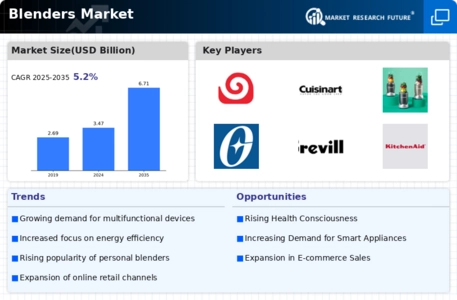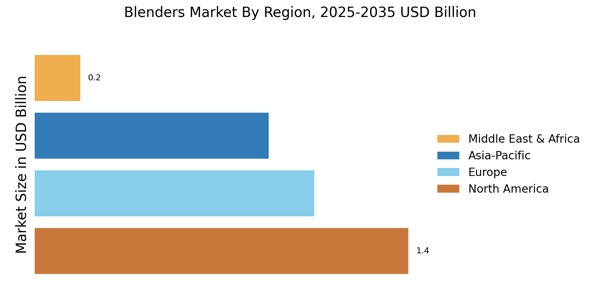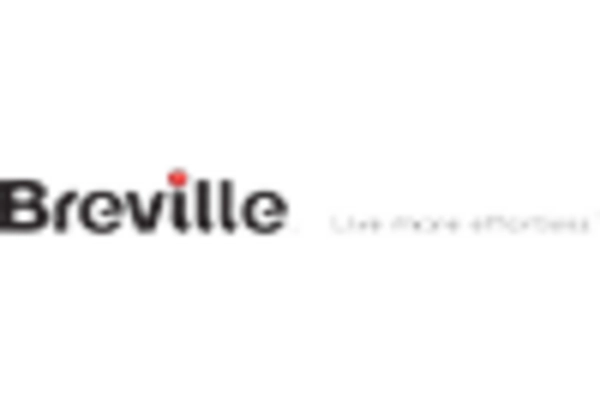Leading market players are investing heavily in research and development in order to expand their product lines, which will help the blenders market, grow even more. Market participants are also undertaking a variety of strategic activities to expand their global footprint, with important market developments including new product launches, contractual agreements, mergers and acquisitions, higher investments, and collaboration with other organizations. To expand and survive in a more competitive and rising market climate, blenders industry must offer cost-effective items.
Manufacturing locally to minimize operational costs is one of the key business tactics used by manufacturers in the global blenders industry to benefit clients and increase the market sector. In recent years, the blenders industry has offered some of the most significant advantages.
Major players in the blenders market attempting to increase market demand by investing in research and development operations include Vitamix Corporation, Blendtec, Inc., Hamilton Beach Brands Holding Company, Conair Corporation, Cuisinart, Nutribullet, LLC, Oster, Philips Electronics N.V., Black+Decker Inc., Breville Group Limited, KitchenAid, Ninja Kitchen, Sunbeam Products Inc., Waring Commercial, Inc., Panasonic Corporation, Kuvings, Magimix, Braun GmbH, JTC Electronics Ltd and Electrolux AB.
Koninklijke Philips NV (Philips) is a diversified technology firm that creates and produces consumer electronics and medical solutions. Diagnostic imaging, image-guided treatment, ultrasound, monitoring and analytics, enterprise diagnostic informatics, sleep and respiratory care, population health management, linked care informatics, and therapeutic care are all sectors in which the business provides products and solutions. Products available include power toothbrushes, sterilisers, breast pumps, shavers, brush heads, baby bottles, groomers, trimmers, and items for skin, hair, and hair removal. It also sells personal care and dental healthcare items.
A variety of electric and electronic goods are developed, manufactured, sold, and serviced by Panasonic Holdings Corp. (Panasonic), originally known as Panasonic Corp. The range of products offered by Panasonic includes air conditioners for individual rooms, TVs, landlines, digital cameras, video equipment, audio equipment for the house, rice cookers, lights, wiring devices, air conditioners, air purifiers, and bicycles. Additionally, it provides projectors, batteries, electric motors, electronic materials, electronic components, electronic materials, semiconductors, LCD panels, mounting machines, welding equipment, PCs and tablets.


















Leave a Comment